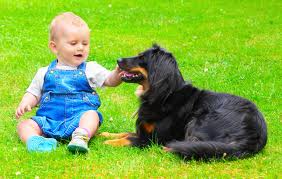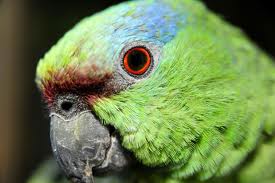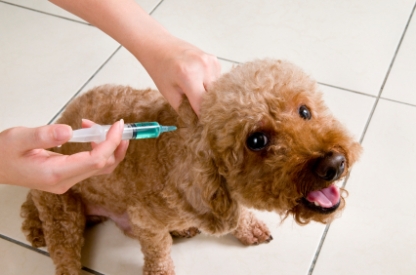 People of different professions and ages much of his free time paid breeding pets. One is a hobby brings joy of communion with nature, others see his team of friends who love to pay to them a touching affection. In most families there are animals in the house at the request of children for whom particularly high cognitive and educational importance of communication with animals. Caring for fish, birds and small animals instills industriousness, punctuality, creative skills, and respect for all living things.
People of different professions and ages much of his free time paid breeding pets. One is a hobby brings joy of communion with nature, others see his team of friends who love to pay to them a touching affection. In most families there are animals in the house at the request of children for whom particularly high cognitive and educational importance of communication with animals. Caring for fish, birds and small animals instills industriousness, punctuality, creative skills, and respect for all living things.
Setting the stage for the animals in the house, the family takes up a lot of concern that require some expenditure of funds, time and effort. Requires some skill, patience, discipline and knowledge of biological features of the animal. Of the more than half a million different species of animals in the home may well exist and be safe for humans, less than 1%. Sometimes people are trying to help those in need wild animals, take them home, so that in some time to release them back to freedom is stronger and healthier. But such altruism can result in disaster – tamed young animals, as adults, can no longer live independently and die. In this case it is better to leave the pet at home or transfer to the pet store, a school of living area, a station of young naturalists.
At present, opportunities for breeding in the home increased significantly: introduced new types of pets, in most major cities of the specialized pet shops are open, amateur associations are created, published a lot of literature.
Among domestic animals the most popular and widespread are exotic fish and other inhabitants of the aquarium. Aquarium – is not only container, a vessel for the content of aquatic organisms, and the specific biological system capable of self-regulation. Is rectangular, cylindrical, round, nodular with truncated apex, etc. Buy an aquarium, as well as his pets in pet stores can. To create a normal environment you need to create at the bottom of the tank bottom (sand, gravel, pebbles, shells), dilute aquatic plants and algae (water sprouts, , kobomba, Ricci uviranda and others), to acquire or produce their own devices for additional light and oxygen saturation of water. The aquarium can live as inhabitants of the local rivers and lakes (bitterling, eel, rudd, tench, gudgeon) as well as various types of exotic fish (Chinese, and calico telescope, the comet, celestial eye, a common goldfish and many others). Buying fish, you should consult the compatibility of different species and their feeding. It is best to refer to the literature.
More and more amateurs home terrarium – space for amphibians and reptiles content, as well as invertebrates and small mammals. However, keeping animals in terrariums little studied and is poorly lit in a special and methodological literature. First of all, must be carefully insulated enclosure to prevent the possibility of leaving his animals and the creation of a specific microclimate: a certain temperature, humidity, etc., Terrarium, usually manufactured without cracks of thick metal wire and a wall of glass (for observation). It can include toads, frogs, newts, snakes, turtles and lizards.
Fun activity is to breed the birds. When deciding to purchase feathered friends, you need to find out if someone is suffering from allergic diseases of family members, as the presence of birds in the house sometimes contributes to their aggravation. Do not rush to buy birds at random people, but before examining the requirements of feeding and caring for feathered refer to the pet store or a section of the amateur poultry. At home, the birds are kept in cages, aviaries or cages. Of the herbivorous birds can live in captivity sparrow grosbeak, finch, linnet, bunting, waxwing, bird, bullfinch, siskin, goldfinch, from insectivorous – lark, robin, common nightingale, singing thrush, nuthatch, starling, wagtail other. The most common is domestic content of exotic birds, especially parrots. They are all herbivorous, and many of them well to imitate human speech and are long-lived (live 50 – 80 years). Among poultry in the territory of Russia, the most common budgerigar, finch rack, parrot, gray parrot, pink cockatoos, and others.
When breeding wild or domestic mammals, in addition to the conditions and feeding, it is necessary to consider a number of ethical and sometimes legal issues. All mammals have well-developed psychic, teachable, trainable, responsive to affection and pain. In this regard, human relationships with them are governed by a number of legal acts: the rules of detention, transportation, quarantine, the decrees of the responsibility for cruelty to animals, etc. But there are unwritten laws of kindness and humanity. Therefore, to decide on the content of the mammals in the house should be, considering its capabilities and features of the animal.
From wild animals at home can live successfully protein, hedgehog, loir, hamster (Syrian or Central Asian).
Of the 300 breeds of dogs in the home would be best to include decorative. This variety of poodles, terriers, as well as Western and Oriental decorative dog (Maltese lap dog, or french, dwarf Pinscher, Pug, French Bulldog, Japanese Chin, Pekingese, and others).The plant in the house dog of any breed, it must be remembered that it is not a toy, but above all else and demands appropriate attention. Dog – the most loyal, selfless, forgiving, and understanding to each lot. Quite a few pleasant minutes delivers the contents of the house and different types of cats. They, like dogs, are the most common domestic mammals.
Any pets in the house – is not only worries and troubles, but above all it is an immeasurable joy of living creatures, with a part of nature.


You must be logged in to post a comment.